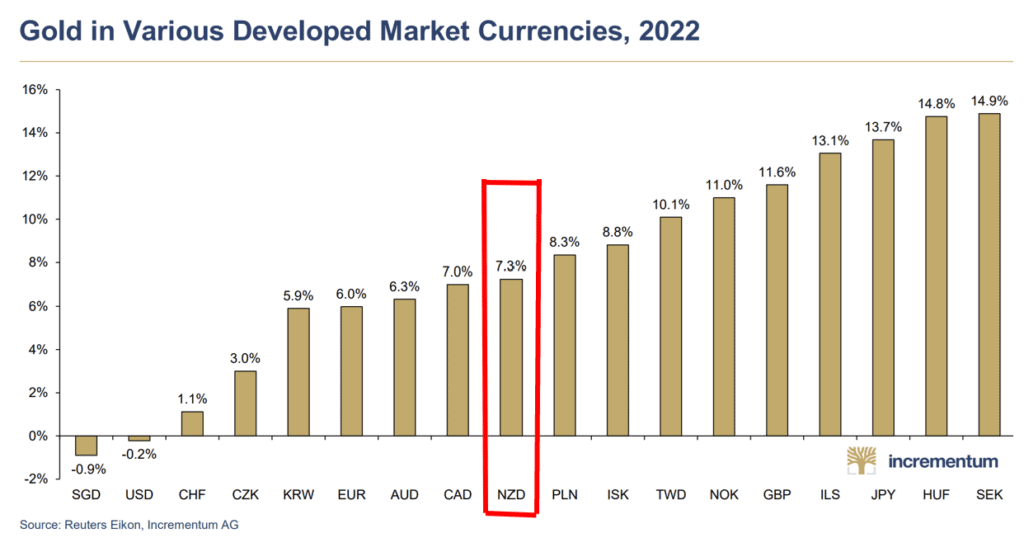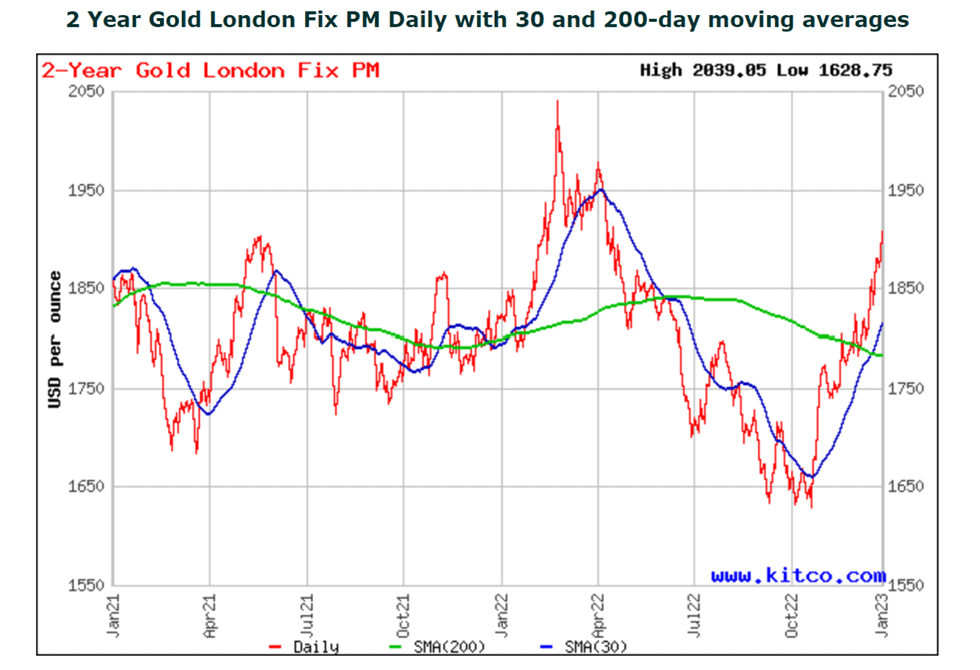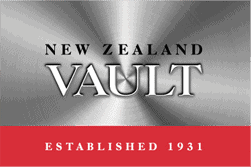Gold did its job in 2022. The S&P 500 was down -19%; the NASDAQ Composite down -33%; the Dow Jones down -8.8%; the NZX50 was down 11%; Overall Gold was one of the best performing assets in 2022.
In New Zealand dollars, gold was up +7.3% while in US dollars, gold was largely flat, down just -0.2%. Gold performed well despite some strong headwinds from rising interest rates and tightening monetary policy to curb inflation, along with a strengthening US dollar.
Each time the Federal Reserve hiked interest rates, there was a subsequent drop in the price of gold.

2022 was a volatile year, and bullion generally acts as a safe haven during these times.
- New Zealand continued to be impacted by the pandemic with further lockdowns during the first half of the year. China’s zero Covid policy resulted in strict shutdown protocols across numerous cities. These shutdowns had a negative impact on supply chains and contributed to the inflationary environment.
- On the 24th of February Russia invaded Ukraine. As a result, European natural gas prices nearly tripled, and crude oil prices reached $110 per barrel. Apart from oil and gas, the conflict impacted several agricultural commodities. Ukraine accounts for 10% of the world wheat market, 15% of the corn market, 13% of the barley market, and more than 50% of world trade in sunflower oil. In September the Nord Stream 1 & 2 gas pipelines to Europe were sabotaged south of the Swedish mainland, further compounding the energy crisis in Europe.
- Over recent years there has been growing tensions between China and the USA. China is on the ascent and has rapidly grown to be a contender to the USA, for both economic and military dominance. Trade has become more restrictive in recent years. Tensions peaked back in August when the US House Speaker, Nancy Pelosi, visited Taiwan. China immediately responded with aggressive military exercises in the area which also intruded into Taiwanese air space.
2022 also saw some profound cyclical changes.
- Global interest rates and inflation have been trending down since the early 1980’s. Until recently a few countries including the Euro area, Japan, Sweden, Switzerland, and Denmark, had negative interest rates. That all changed in the US on March 17 when the Federal Reserve increased the funds rate by 0.25% and admitted that inflation was not transitory. Between March 17 and December 14, the Federal Funds rate rose 4.25%. This was proportionally the fastest increase in Federal interest rates ever. US inflation peaked in July at 9.1%, a level not seen since the early 1980’s.
- Since the 1980’s there has been a trend towards globalization and reduced trade barriers. This has resulted in hundreds of millions of people around the world being lifted out of poverty. It has resulted in distributed supply chains and lower cost manufacturing. It contributed to a low inflation environment. The rise of China as an economic powerhouse has changed the dynamics in international trade. The US raised intellectual property concerns with China and tariffs and trade controls have been progressively increased during both the Trump and Biden presidencies. The Covid pandemic has highlighted the vulnerability of companies having globally distributed supply chains. The process of “on-shoring” and “friend-shoring” has taken on increased urgency during 2022.
What are the prospects for Gold in 2023?
The reality is that no one really knows. Real interest rates are forecasted to rise in 2023 which would be a head wind for gold. The US dollar was up in 2022, but it is impossible to predict where it will go from here. From a technical perspective the 30-day moving average has recently crossed the 200-day moving average, which is a positive set up for gold.

With the combination of geopolitical uncertainty, and major changes in long term cyclical trends, there is heightened market volatility and increased risk for global ‘black swan’ events. This is why you should consider holding a small allocation of physical gold in your investment portfolio.
Gold is a safe haven asset and an excellent store of wealth, that has a history of maintaining its purchase power over the long term. Gold often acts counter cyclically to other assets and can act as a hedge against a depreciating currency.

John Mulvey is the owner and CEO of New Zealand Vault. New Zealand Vault has been operating since 1931.
New Zealand Vault has safe deposit box vaults in Auckland and Wellington and has a specialist bullion depository in Wellington.







